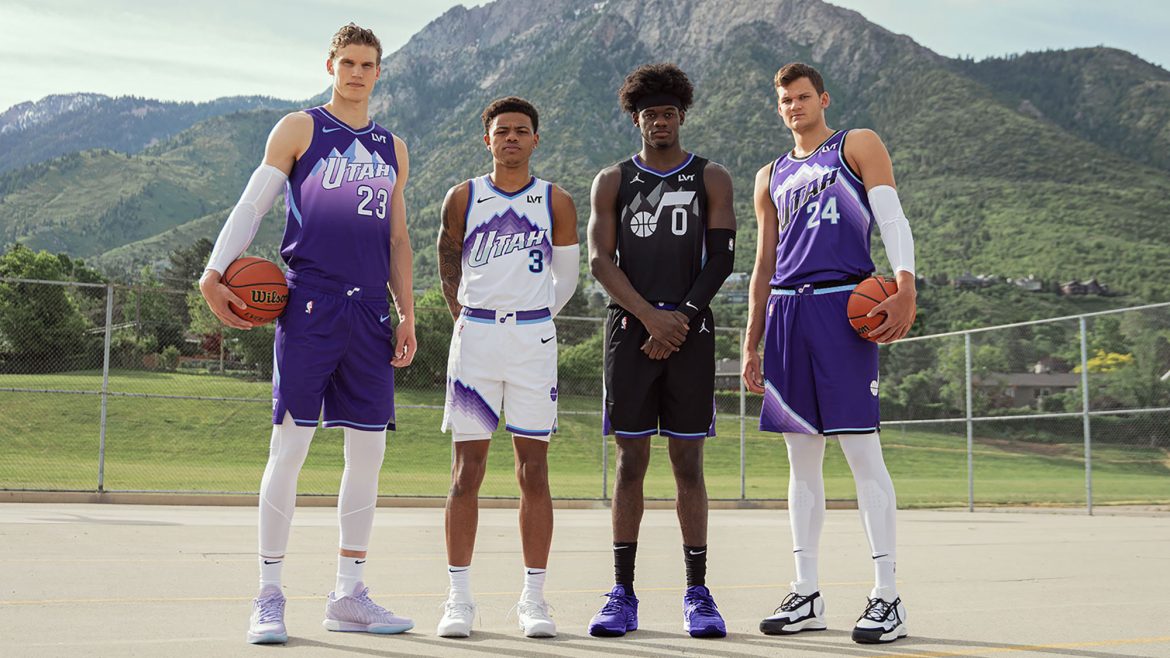The Utah Jazz have put themselves into a bit of a pickle with their signing of Lauri Markkanen to a long-term contract extension this off season. Yes, the Jazz keep an all-star and consensus top 30 player on their roster (Markkanen can’t be traded during the 2024-25 season)—that’s good. But his presence on the roster may preclude them, yet again, from losing enough games to secure a premier pick in next summer’s alleged draft for the ages.
The critique from NBA land is that the Jazz have still not “picked a lane”: they’re not breaking it down enough to score top draft picks yet they’re not adding anything to the Markkanen-led roster that would help them become competitive now or in the very near future.
But maybe the Markkanen signing indicates that the Jazz have picked a lane; or, better said, that they have been forced into a lane. The question now is whether that lane will lead anywhere.
Building from the middle
The Jazz seem destined to continue to swim the ropes again in 2024-25—no playoffs, and a mid lottery finish for the third consecutive season. That’s their lane.
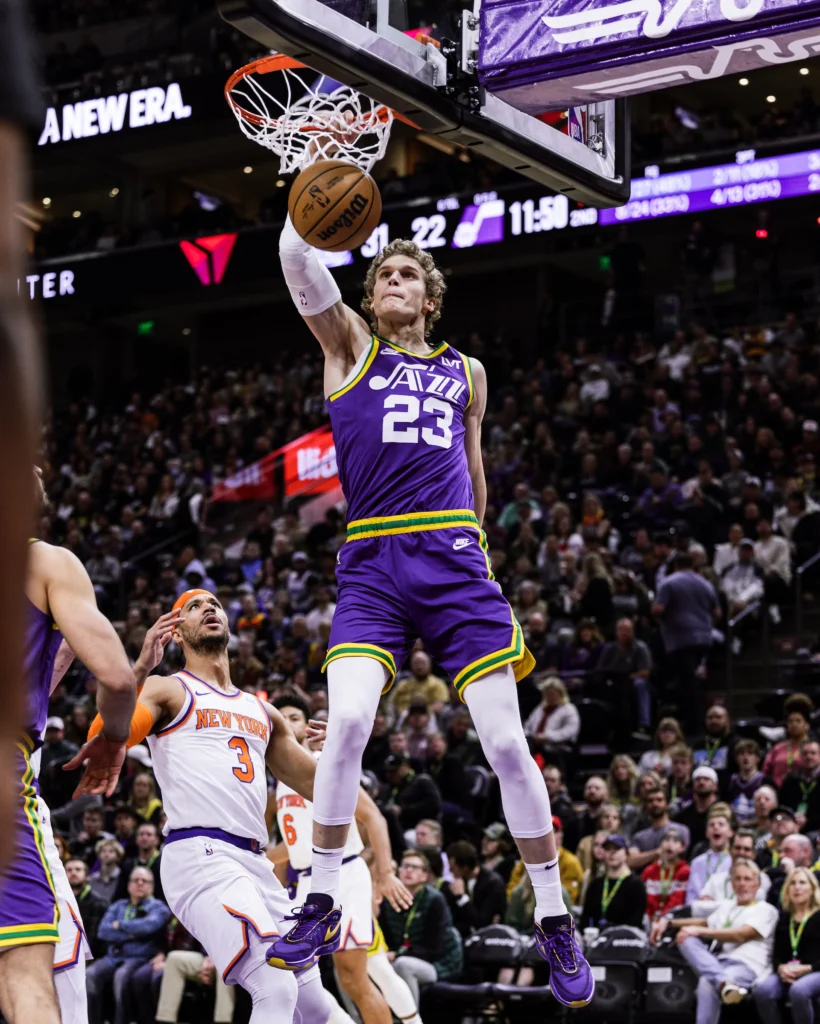
Many an insider or fan might call that NBA purgatory—a swim lane filled will brimstone and never-ending sadness.
Jazz management and promoters describe their current path differently. They remind us that they’ve kept a top 30 player who wants to stay in Utah (a rare combination). They imply that they’ll now lean into their youth, with enough minutes given to the vets to provide structure for development. This tack, they postulate, will provide needed growth for, and time to assess, their young assets while losing enough games to keep their top ten protected draft pick. Yes, the Jazz will be rebuilding from the middle another season, they nod, but they’ll be ready to strike for a golden player via trades and free agency when the opportunity allows.
But does this ever work, really? Does building a competitive team from the middle ever work?
David Locke, host of Locked on Jazz, recently put out a nice podcast looking at the success rate of teams that tore it all down and rebuilt from the bottom—the tankers. He found that out of the 17 teams that have tanked in the last 20-season (tanking defined as finishing in the bottom five in the league for two or more consecutive years), 9 teams recovered to make at least a second-round playoff appearance (53%), 4 teams reached the conference finals (23%), and one team made it to the NBA finals after tanking (6%).
Locke’s results make a compelling argument for tanking when faced with a rebuild—a 50-plus percent chance at a return to contention (competing in the second round of the playoffs) is pretty good. But what about the teams who choose not to tank—like the current version of the Jazz? What does history tell us about their odds at redemption? Are there examples of success for the Jazz’ current grow-from-the-middle approach and how often do they occur?
To answer these riveting questions, Lower the Rim took Locke’s same 20-season data set, filtered for non-tankers, and examined their post non-tank rebuild records.
How often does not tanking work?
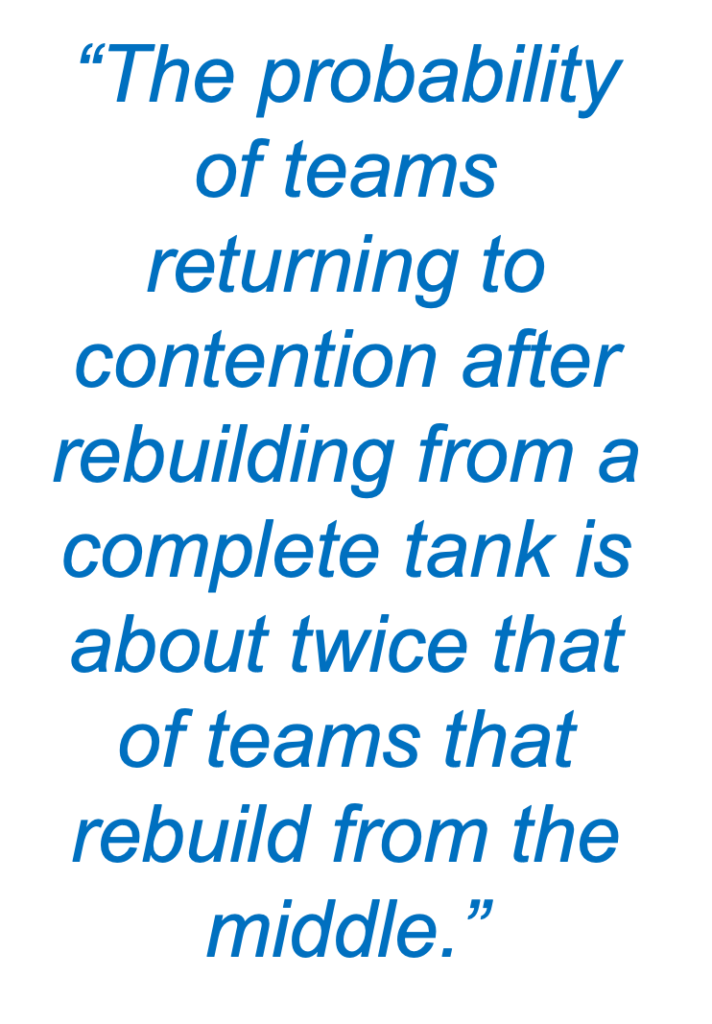
For our review, we’ve defined non-tankers—the build from the middle teams—as teams that finished with better than bottom-five records but worse than top 14 records for three or more consecutive seasons—this is the category the Jazz are headed into in the 2024-25 season. For a rebuild without tanking to be categorized as successful it must result in a second-round playoff appearance or better within seven seasons from their first build-from-the middle season.
We found 16 teams in the last 20 season with three or more consecutive seasons of non-tanking and with enough post non-tanking seasons to assess success or failure. Of our 16 non-tankers, we found only 4 teams (25%) that returned to competitiveness (reached a second round of a playoff) after rebuilding from the middle. Two of those four (12%) reached the NBA finals, and one team won an NBA championship.
Dang! It looks like it really does pay to tank. The probability of teams returning to contention (second round appearance) after rebuilding from a complete tank is about twice that of teams that rebuild from the middle over the last 20 seasons.
So you’re saying we’ve got a chance: The non-tankers that have made it work
So, the Jazz appear to be taking the harder path in their rebuild. Their odds for success aren’t the greatest… but they’re not zero either. They’ve got a chance.
Let’s look at the teams that made it work and see if their examples shed any light on the Jazz’ chances at near-term redemption.
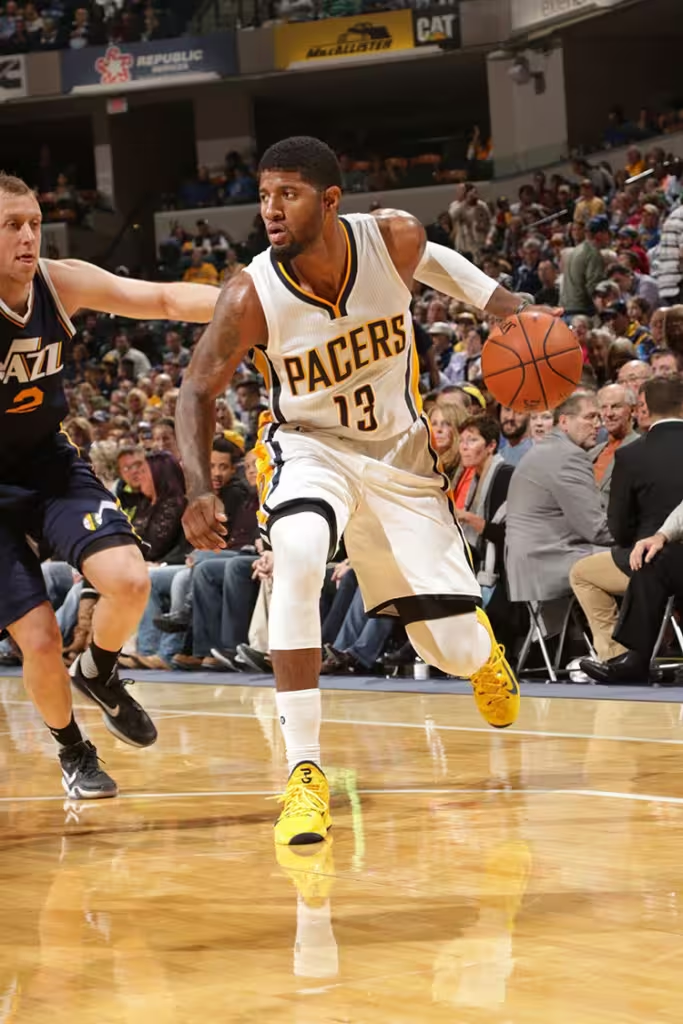
The 2006-07 to 2011-12 Indiana Pacers – The Pacers never came close to bottoming out during their five-year period of mediocrity—they finished no worse than 21st in the league during this time. Instead, they added young talent to Danny Granger, who they had drafted in 2005, and then turned their aging former all-star, Jermaine O’Neil, into Roy Hibbert in 2008. But the key was taking some kid out of Fresno State named Paul George tenth in the 2010 draft. The Pacers made five first-round picks during their five-year rebuild, none higher than the 10th slot. They needed to get lucky in that mid-lottery range. They did in a big way with George.
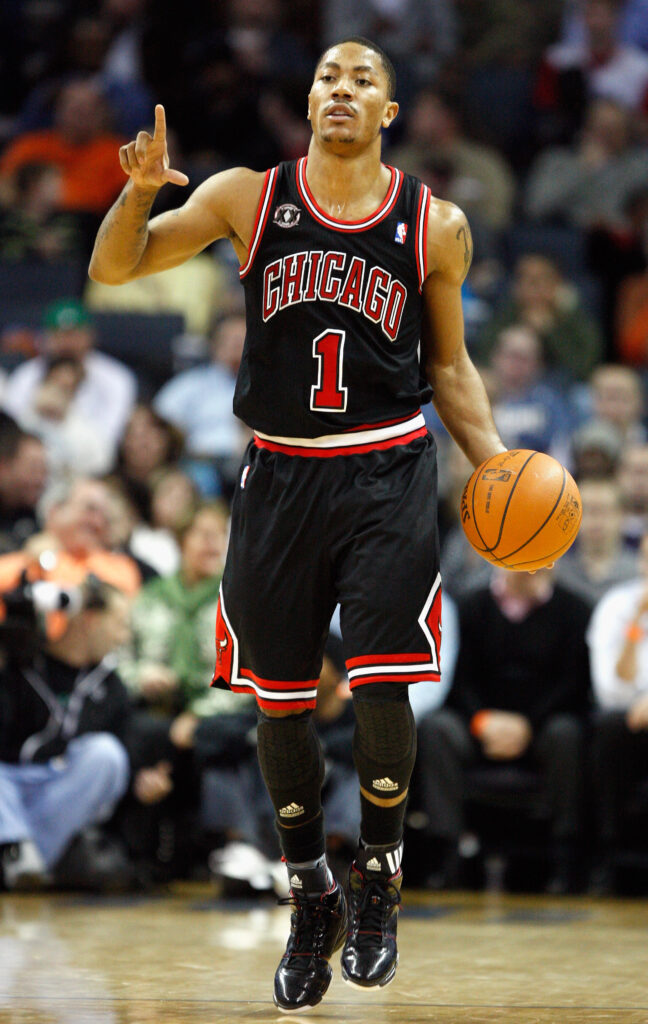
The 2007-08 to 2009-10 Chicago Bulls – The Bulls entered the land of mediocrity when they crashed and burned in 07-08 after being touted as contenders. They did not, however, tear it down after that disappointing season. Instead, they rolled out a miracle. The Bulls, who had a 1.7 percent probability of obtaining the first selection in the 2008 draft, won the NBA draft lottery. They took Derrick Rose with that #1 pick. The Bulls already had Luol Deng on the roster and had just added Joakim Noah in the 2007 draft. It took Rose just three seasons to lead the Bulls from the middle of the pack to a 62-win season in 2010-11.

The 2013-14 to 2016-17 Denver Nuggets– The Nuggets finished the 2012-13 regular season with 57 wins, the most in their NBA franchise history at that time. They were upset, however, by the sixth-seeded Golden State Warriors in a first round series that year. They promptly fired their Coach of the Year winner George Karl, traded Andre Iguodala and would not make the playoffs for the next four seasons. Although the Nuggets did not tank to bottom during this period, they did completely rejigger their line-up through trades, acquiring Will Barton and three first-round draft picks in the process. The Nuggets made six first-round draft picks during their four-year slump—none higher than seventh. They missed with a lot of those picks—like trading the Rudy Gobert pick to the Jazz. But it didn’t matter because they hit in the second round in 2014 on Nikola Jokic. They hit again with Jamal Murray at number seven in 2016 and there you go. No tank? No problem.

The 2016-17 to 2018-19 Miami Heat – After losing Dwyane Wade to free agency (he did return) and Chris Bosh to illness in 2016, the heat spent a brief 3-season non-tank just outside of the success level. They made only two first round picks in those three years but hit with Bam Adebayo with the 14th pick in 2017. In July of 2019 they acquired Jimmy Butler in a trade having to give up only one protected first round pick, Josh Richardson, and Hassan Whiteside in the deal. Bam was already and all-star when Butler arrived, and rest is history.
Each success example above had a unique set of conditions—the starting condition of the rebuilding team, the length of the rebuild, and the quantity and use of rebuild assets were all different across these winners. But all had one thing in common—they got lucky.
When you’re building and drafting from the middle, you have lower odds of acquiring talent that can move you back into contention. Previous Lower the Rim research indicates that about 38% of draft selections (looking at a recent 10-year period) made with draft picks one through four eventually became all stars and about 18% of those picks were All-NBA players. But only about 12% of lottery picks 5 through 14 from that group became all-stars and only 6 percent were All-NBA players. Each of our winning example teams overcame their middle-of-the-pack draft positions by selecting a gem in the bottom 10 lottery slots, or worse, or lucking out and moving up in the in the lottery.
Sadly, the Jazz can’t coach, or manage, or buy luck. But they do have a few current attributes that may increase their chances of becoming the fifth team in the last two decades to pull off a successful rebuild from the middle.
The Jazz’ rebuild advantages
Advantage #1—The Utah Jazz have considerably more draft assets than the previous four successful rebuild-from-the-middle teams. Of those four success stories, Denver made the most first round picks (six) during their four-year rebuild. The Jazz have already made six first-round picks (we’ll count Filipowski as a first rounder) in their first two-years of rebuild. Granted, we don’t see a Nikola Jokic or Jamal Murray in the Jazz’ six draftees… yet. But the Jazz have eight more first round picks coming in the next three years. The Jazz will face lower odds at finding star players from where they are drafting, but they have a lot of rolls of the dice to try.
Advantage #2—None of our four successful rebuild teams had a player as good as Lauri Markkanen on the team at the beginning of their rebuilds. The Jazz obtained what was then thought to be just a good rotation player in Markkanen from the Cavs as part of the Donavon Mitchell trade. He then exploded with an all-star season. The Jazz have already gotten lucky once with Markkanen. Maybe they can do it again.
Advantage #3—The Jazz’s stockpile of young talent and future first round draft picks obtained from unloading Mitchell and Gobert will help them in their pursuit of top-level talent to add to Markkanen. Remember, Miami had the budding all-star Adebayo and then added one top 25 player in Jimmy Butler to march to the NBA finals. Yes, the Jazz have already swung and whiffed at high level players like Butler in free agency and on the trade block. But there is still time to find another top 30 player during this rebuild and the Jazz will have the assets to pay for him if the opportunity arises and it requires a trade.
The Jazz are in a lane. Ainge said he didn’t want to “start over” last year and we think the odds of him changing his mind and starting over in this third season of the rebuild are near zero. They’re in the pipe, five by five, and they’re not going back.
The Jazz have some young talent and a ton of draft assets. There’s a glimmer of light at the end of that dark cylinder. Have one of the six draftees pan out, get lucky one more time in the draft, use the stockpile of draft assets and accumulated young talent to secure another star via trade and maybe you’re the next success story for those rebuilding from the middle.
Oh, and if you don’t do any of those things… there’s always tanking.
